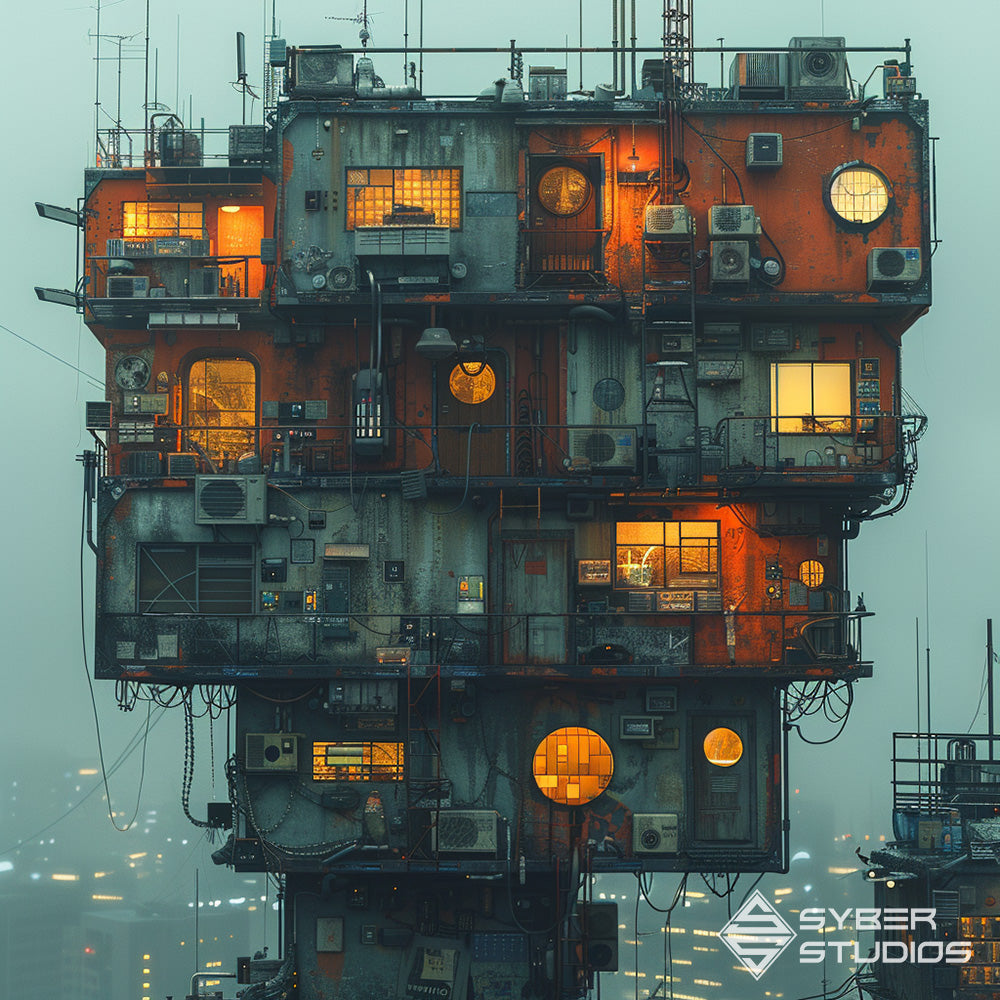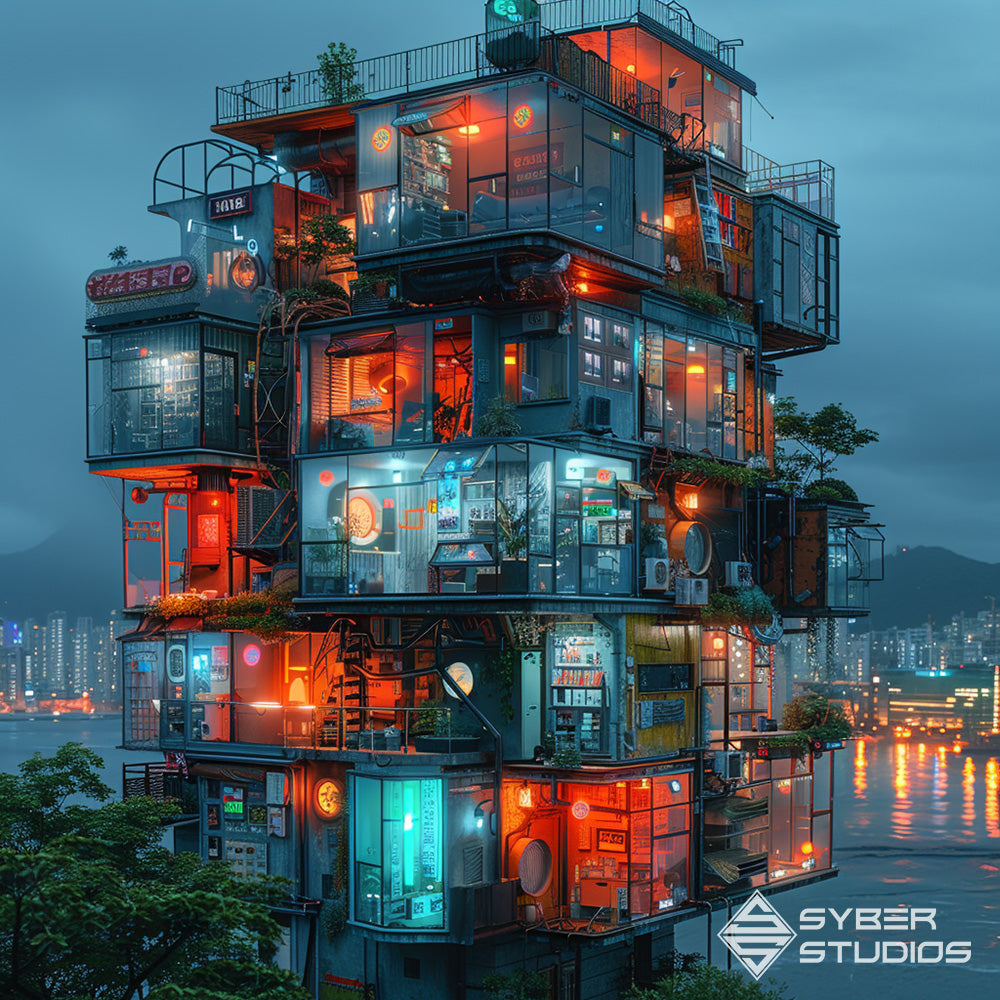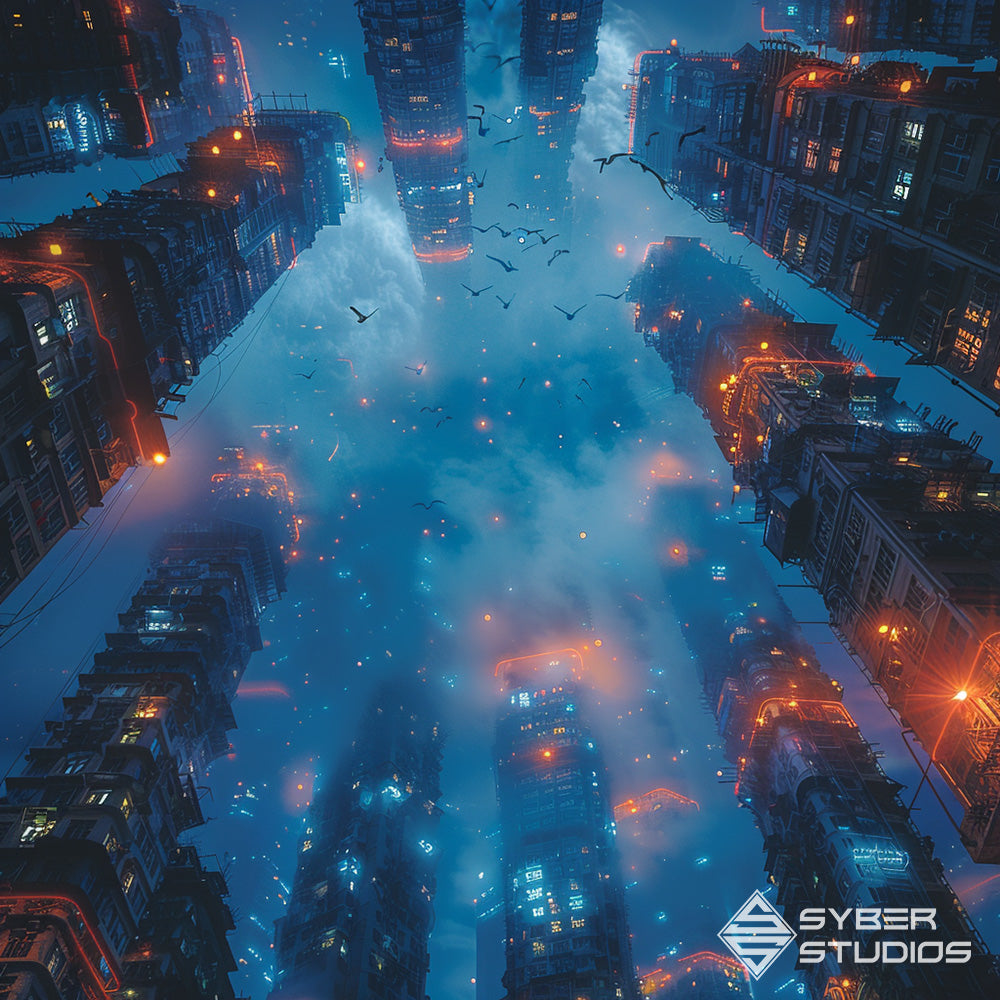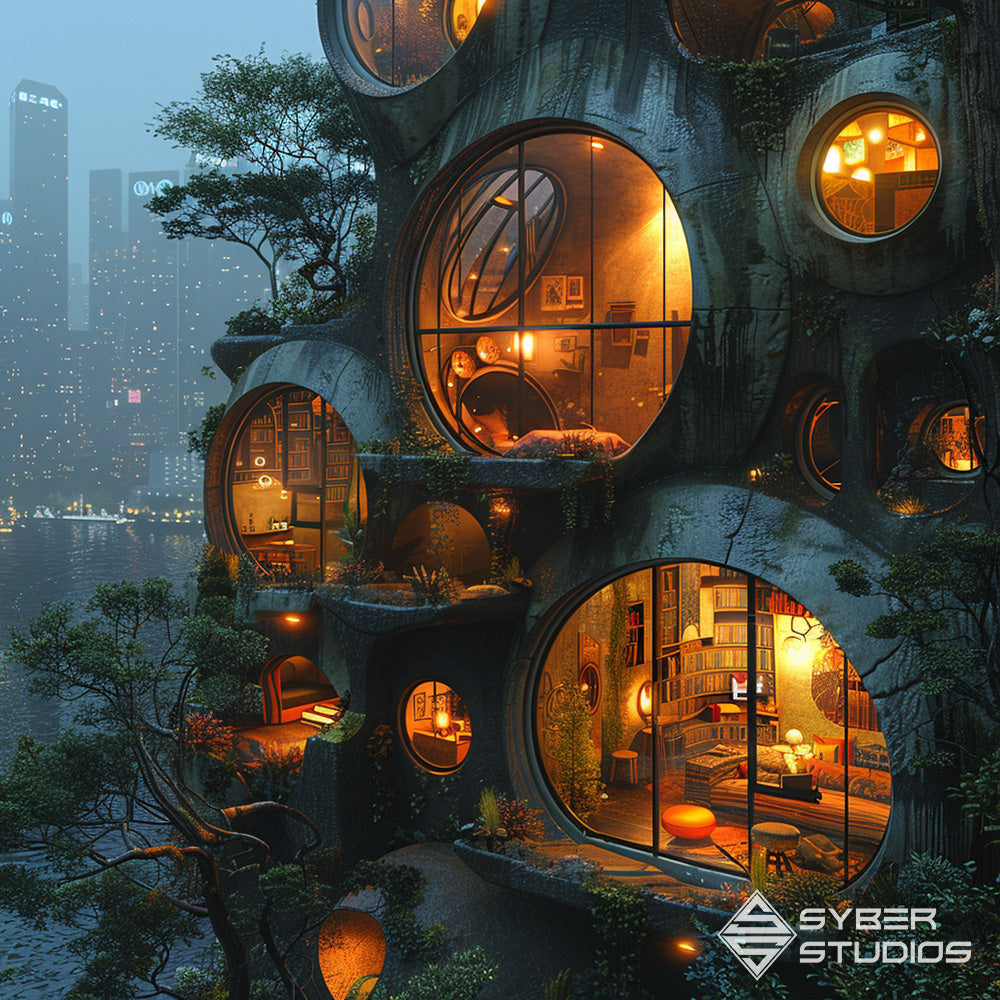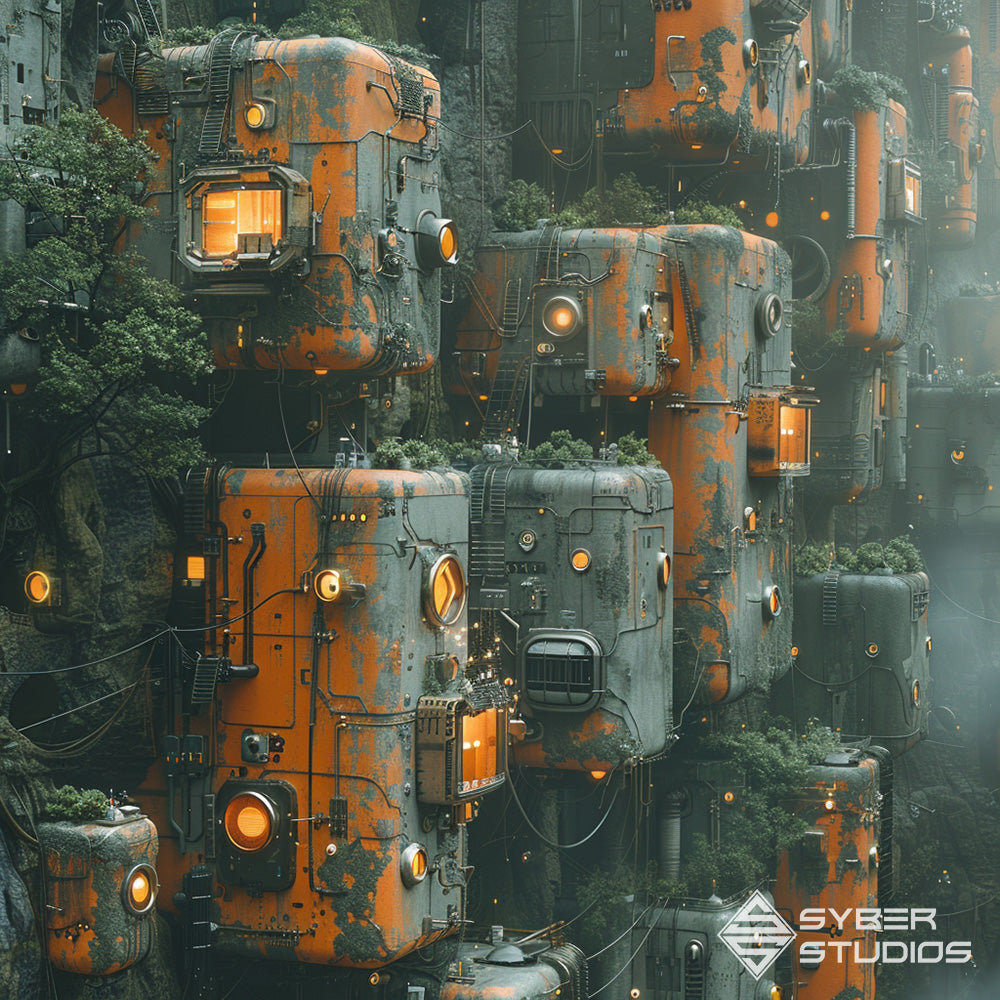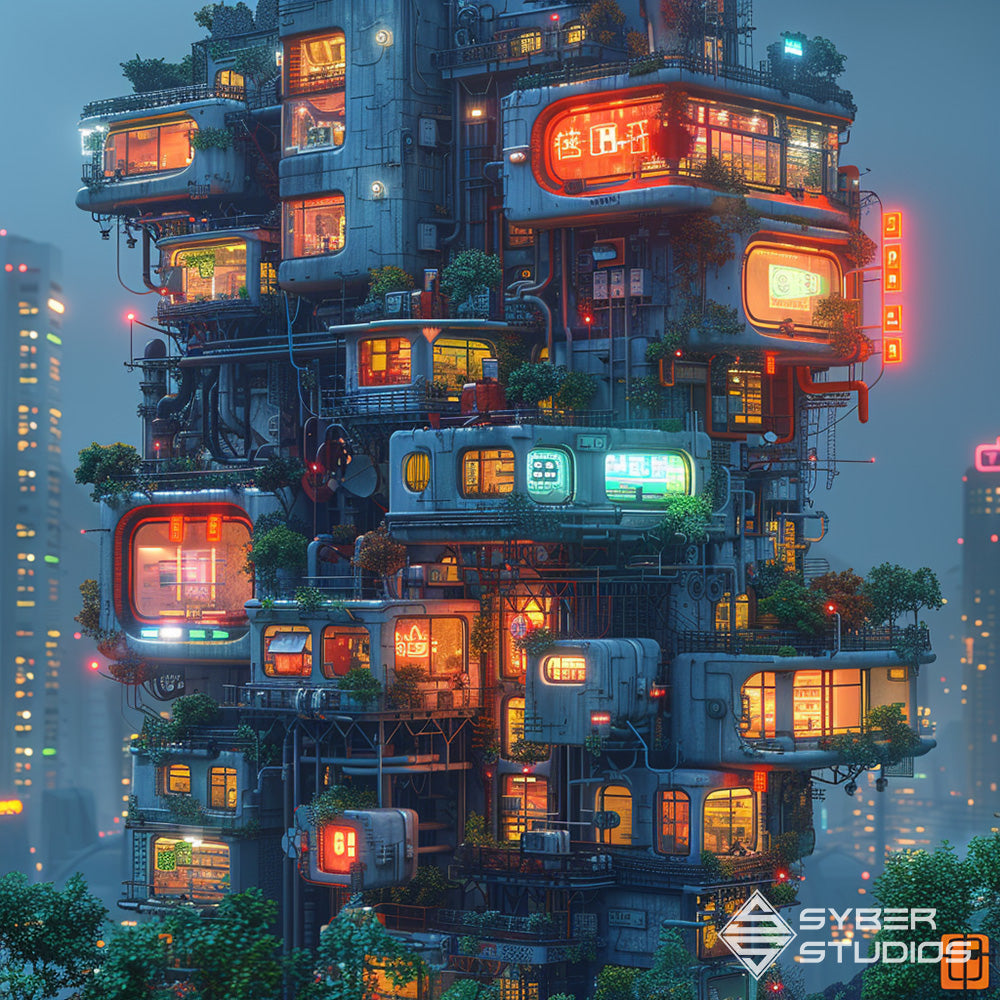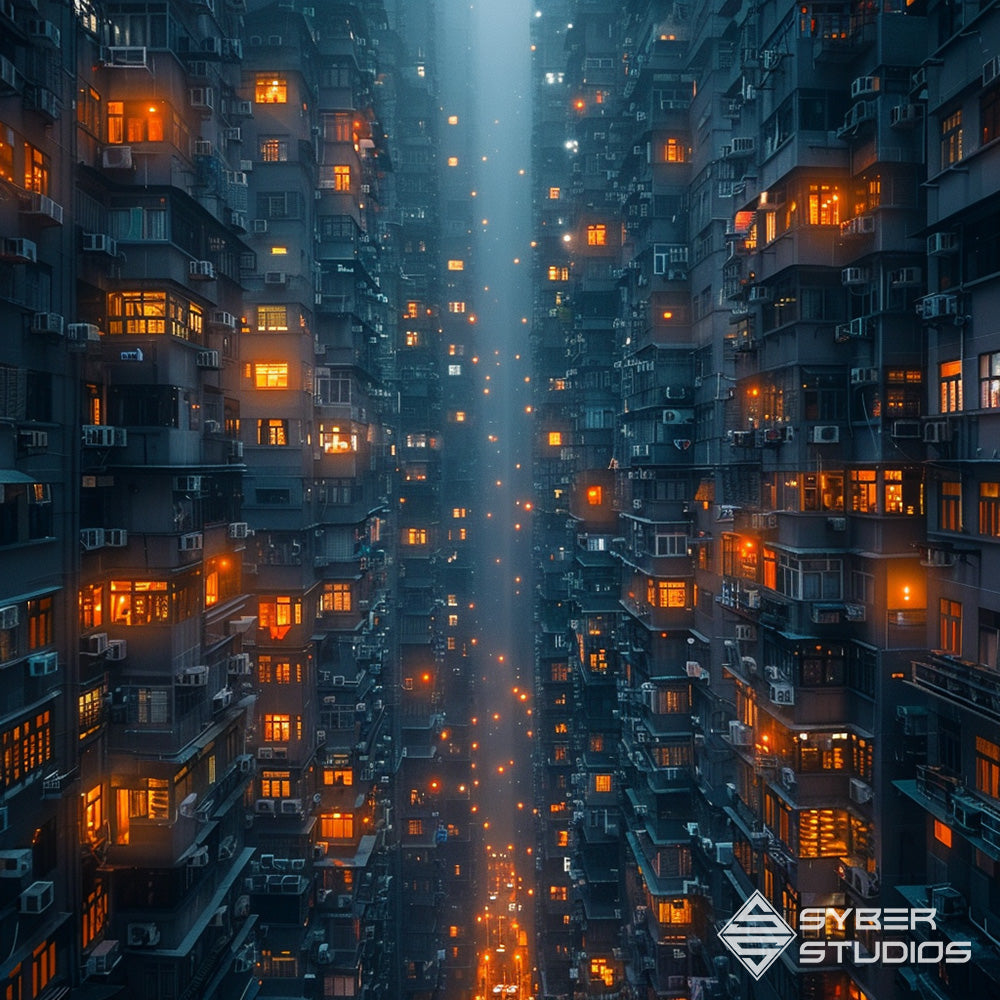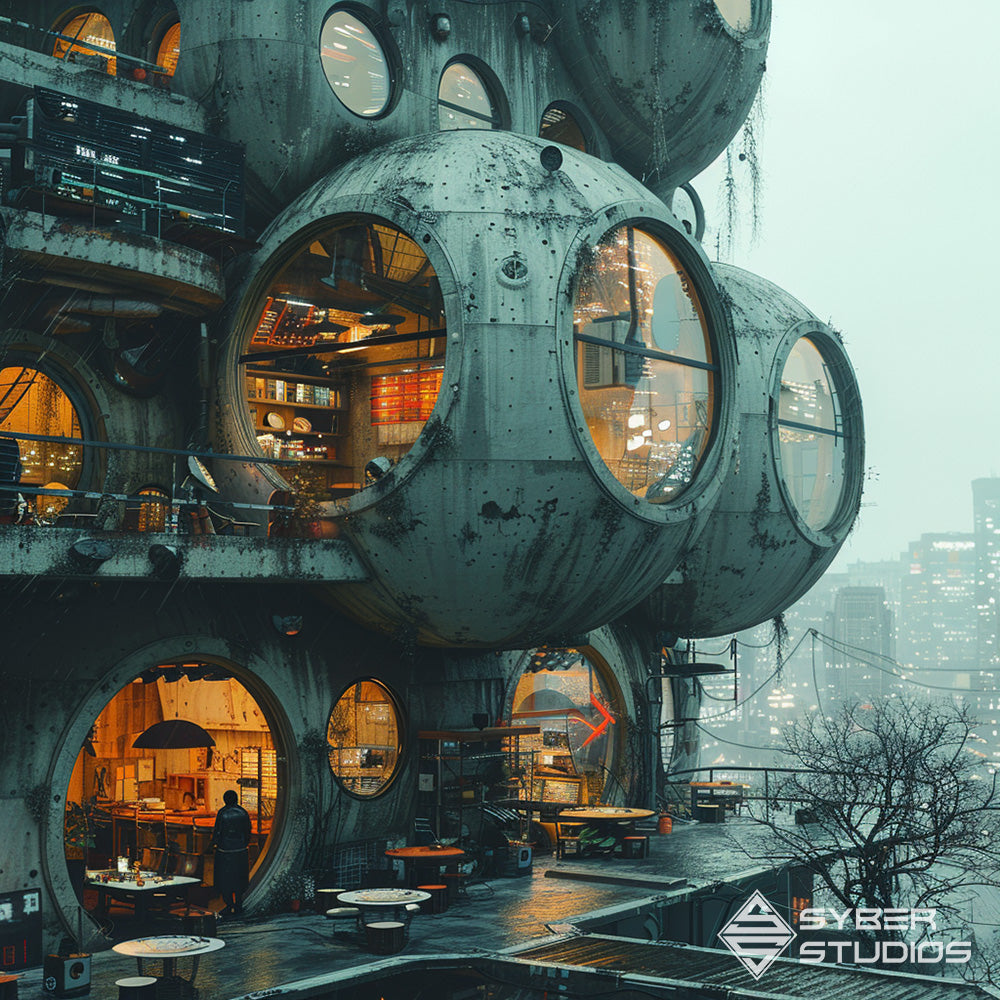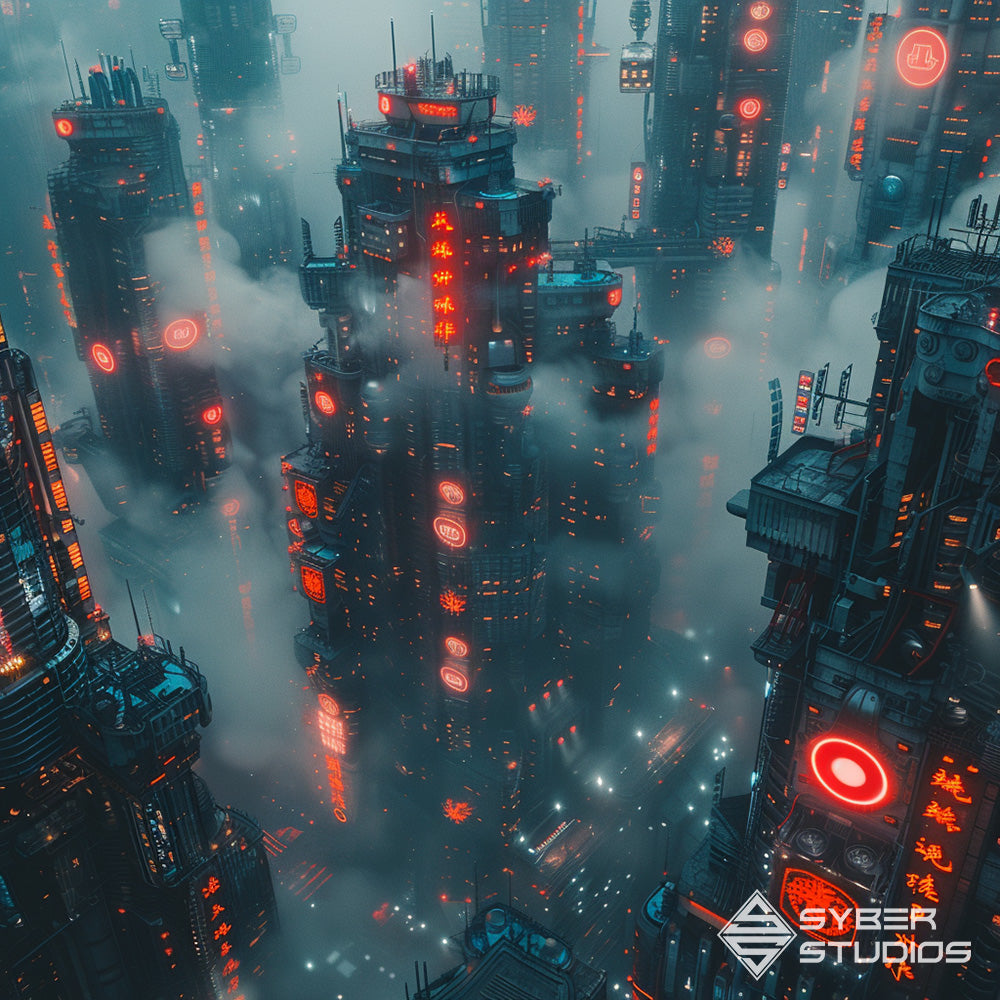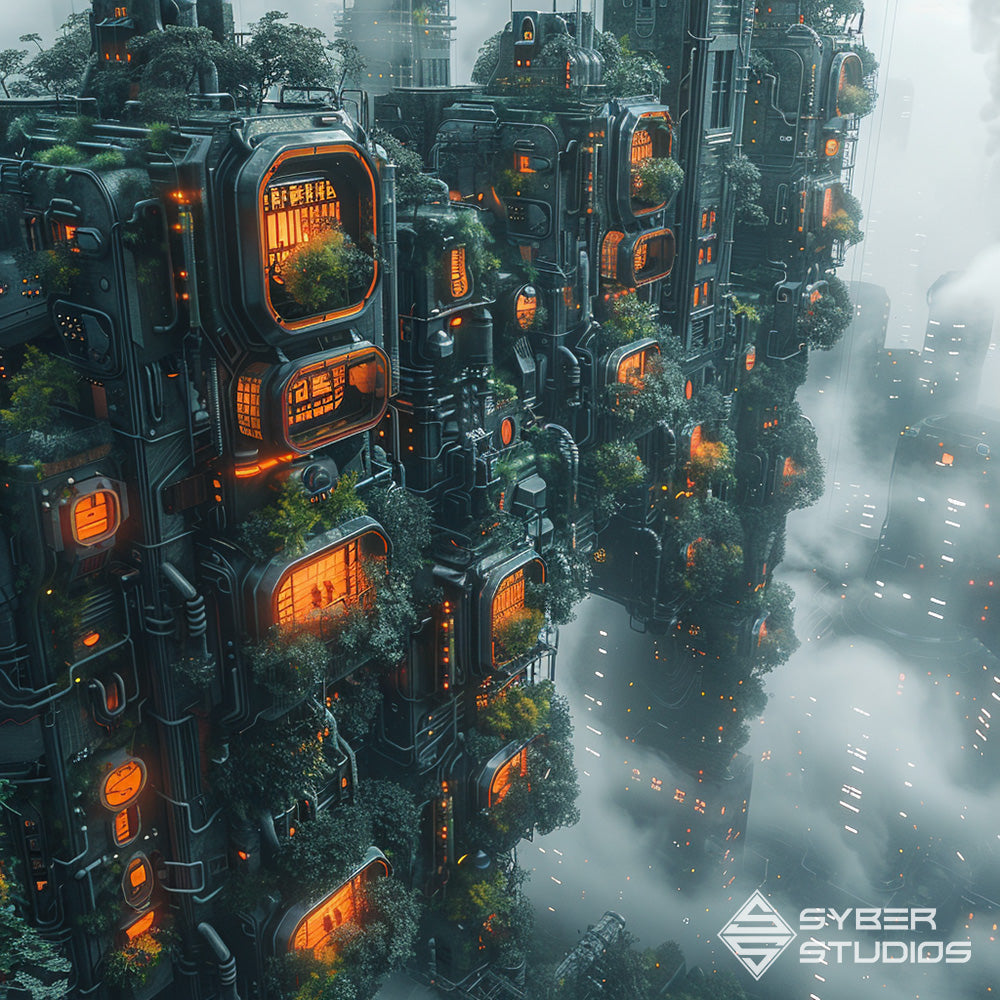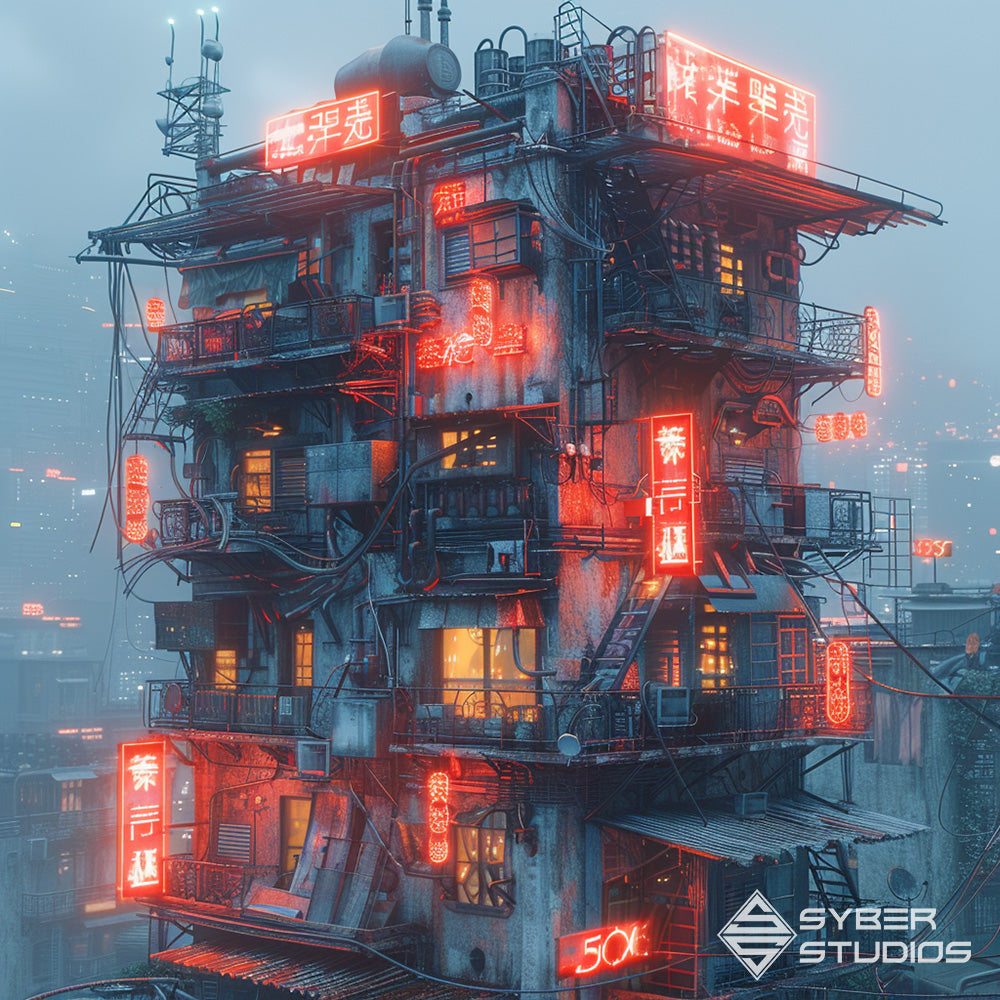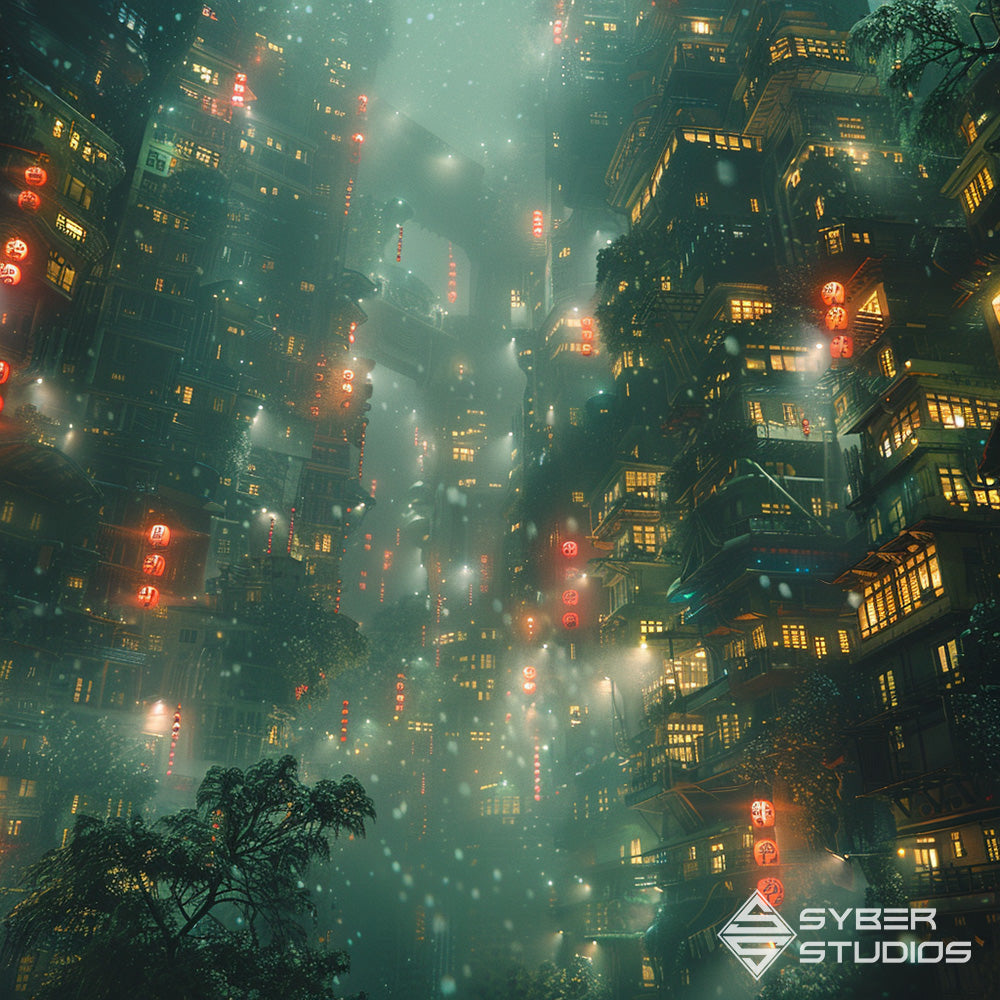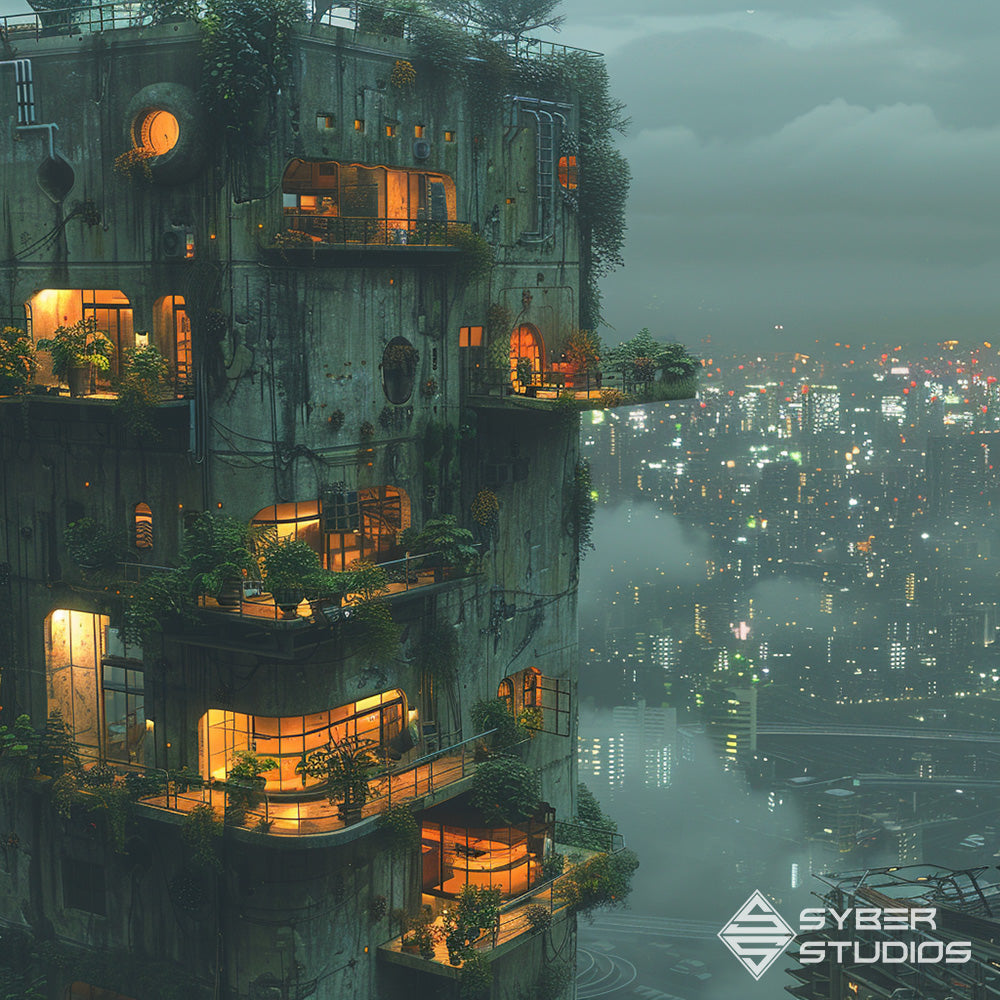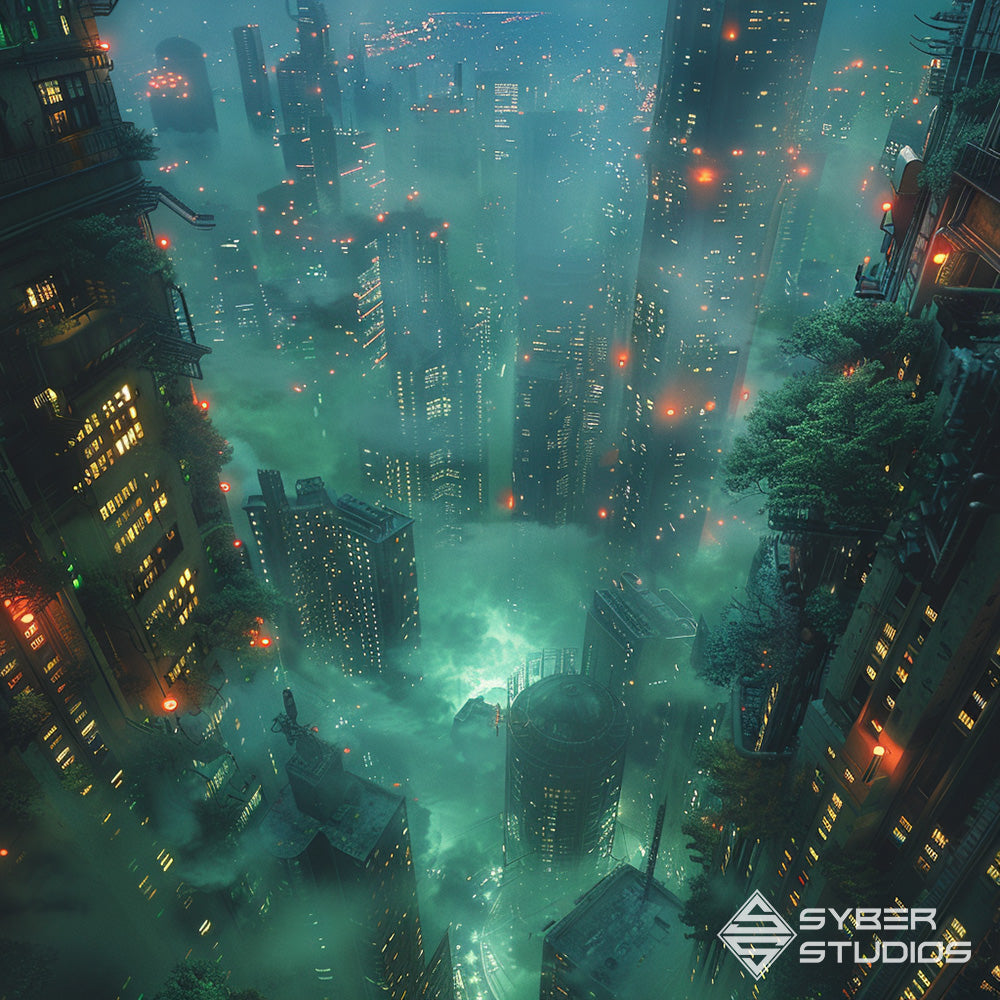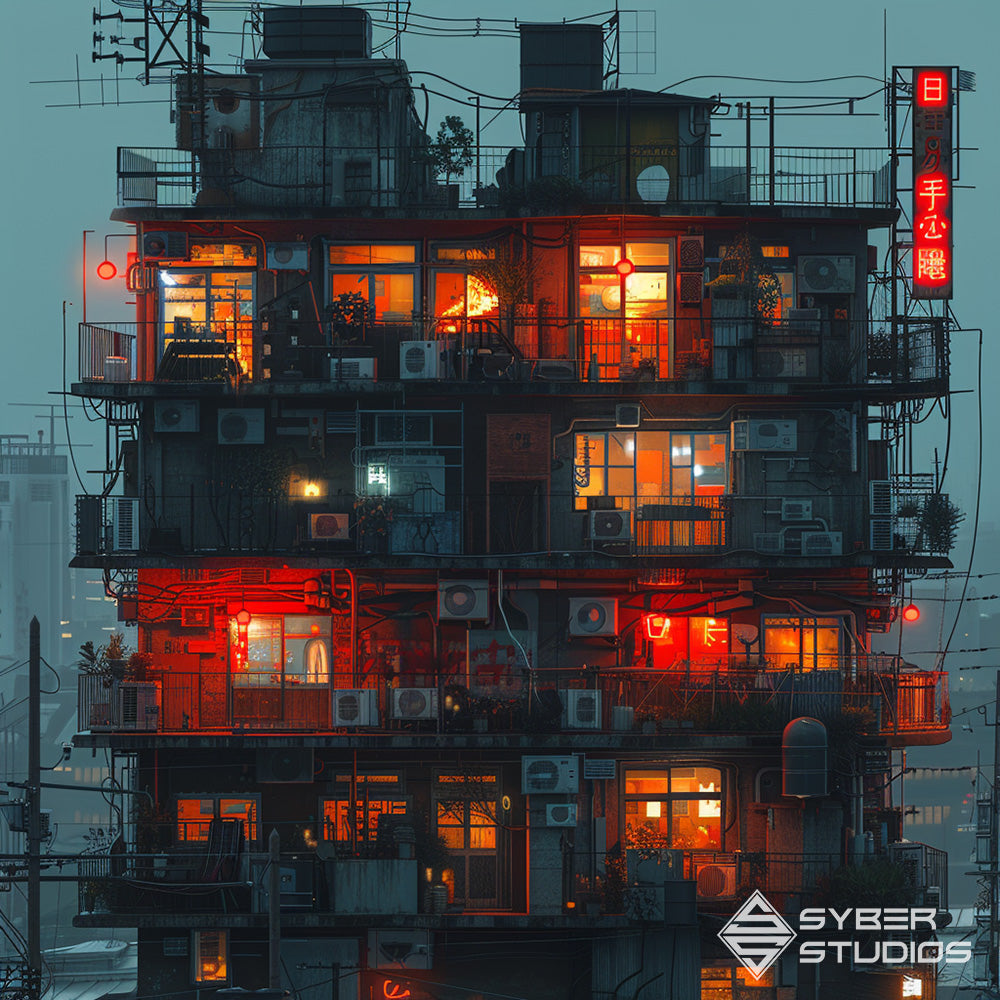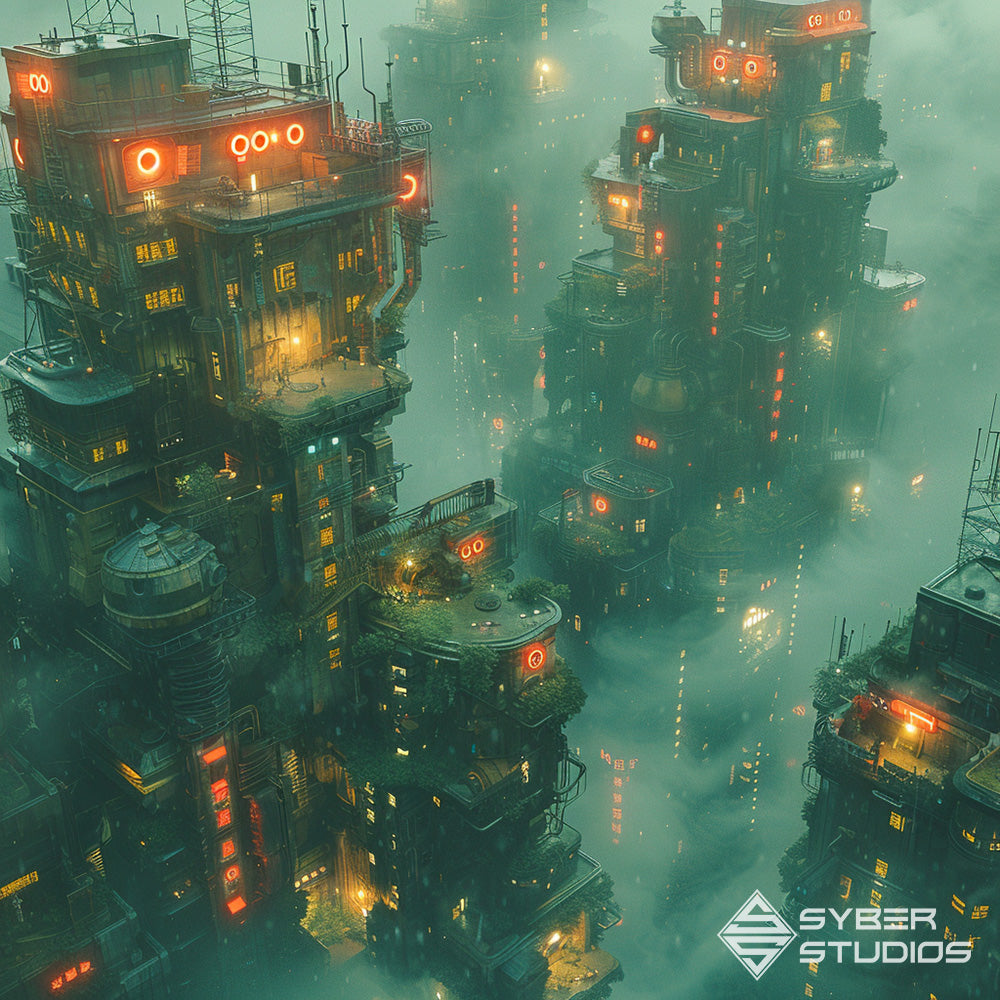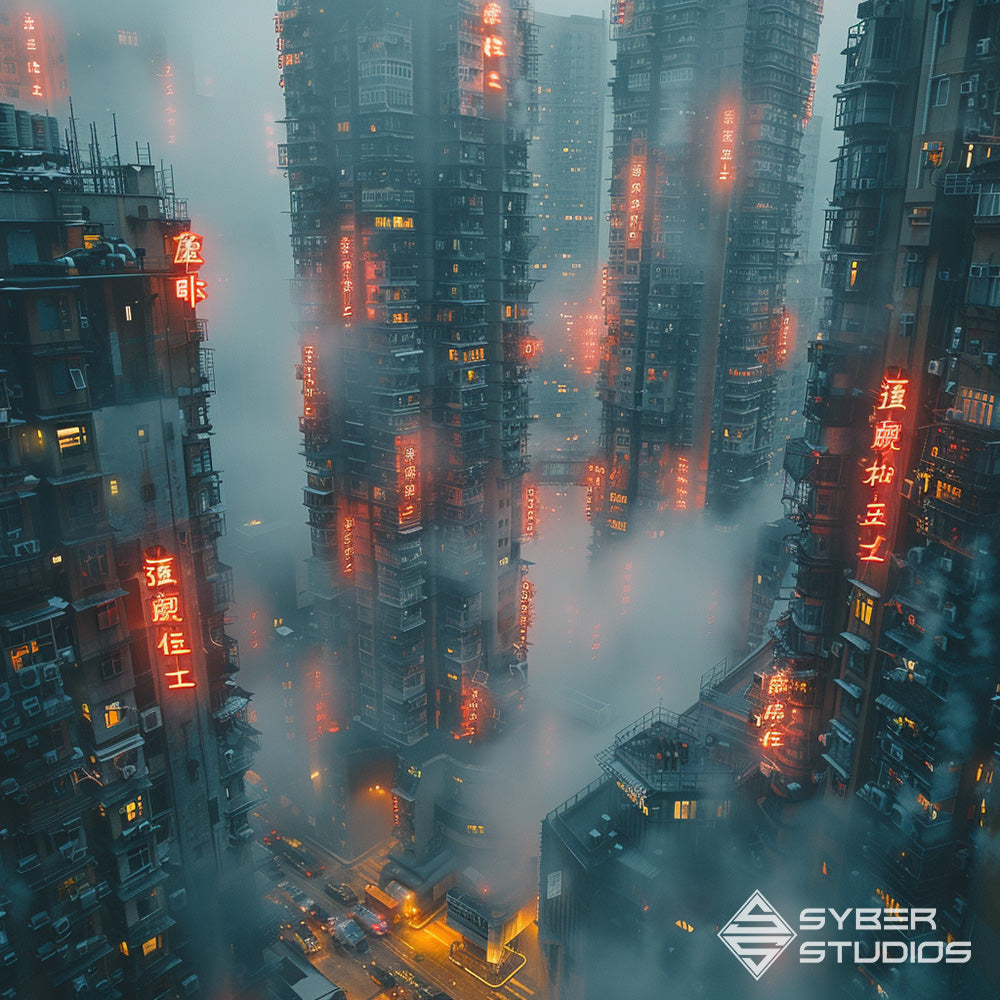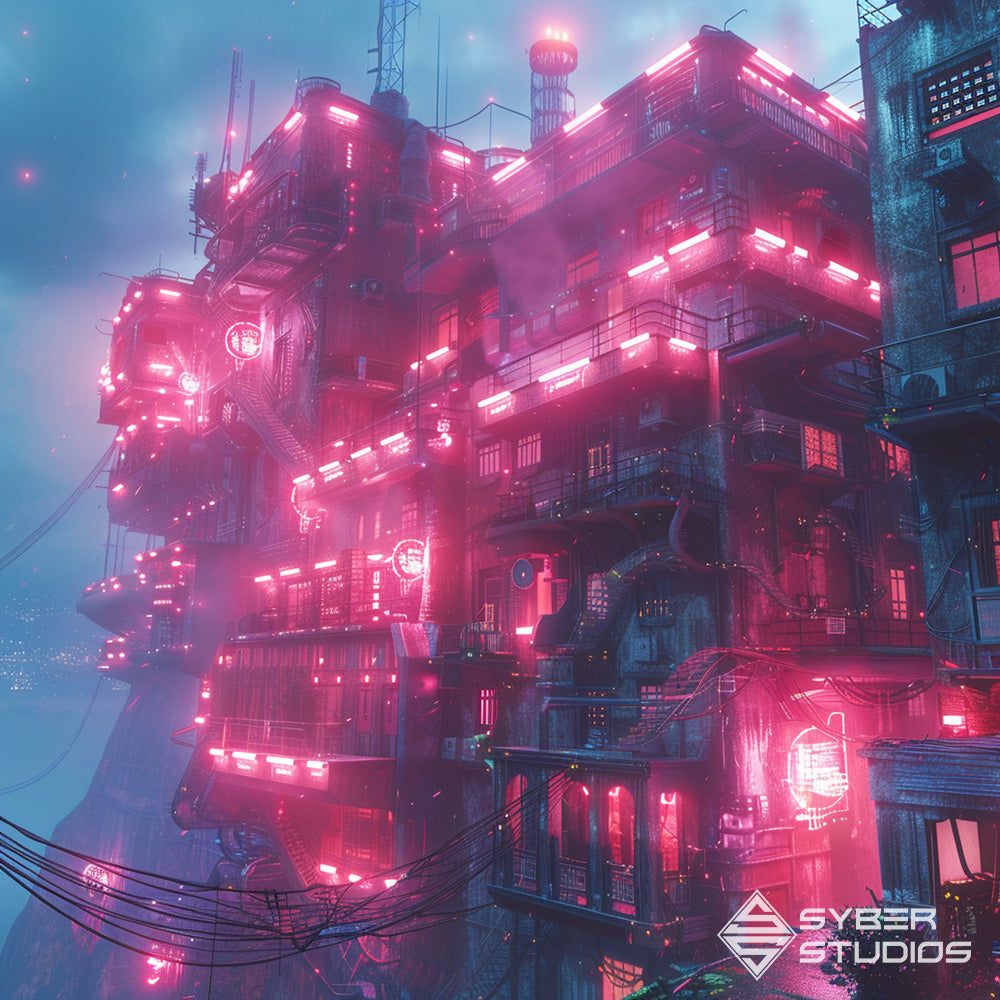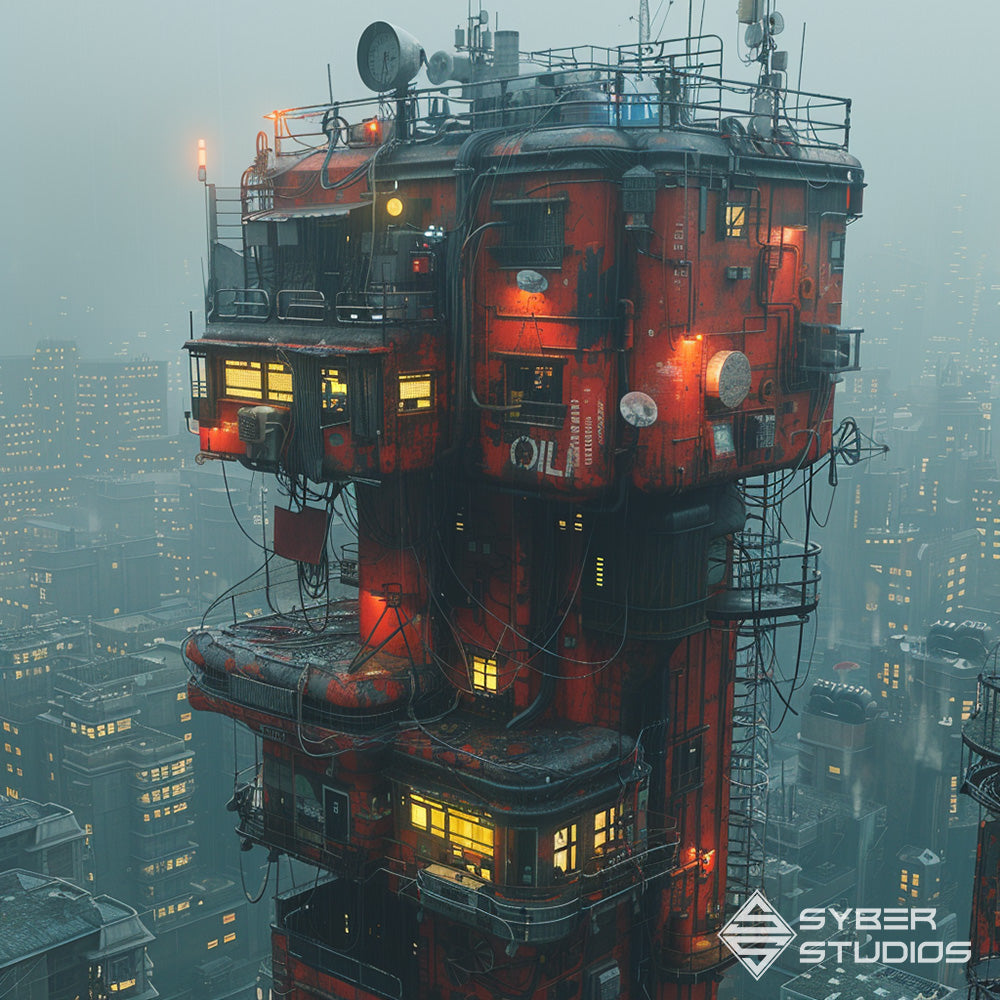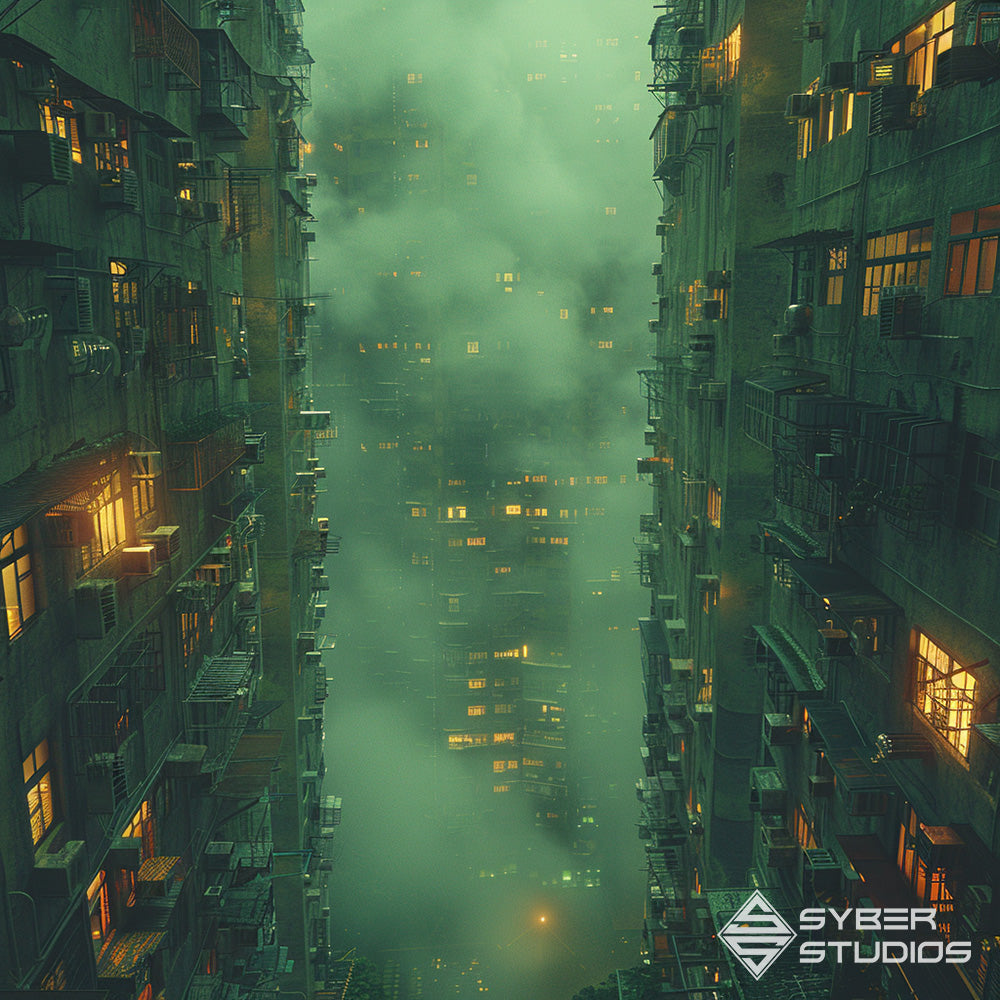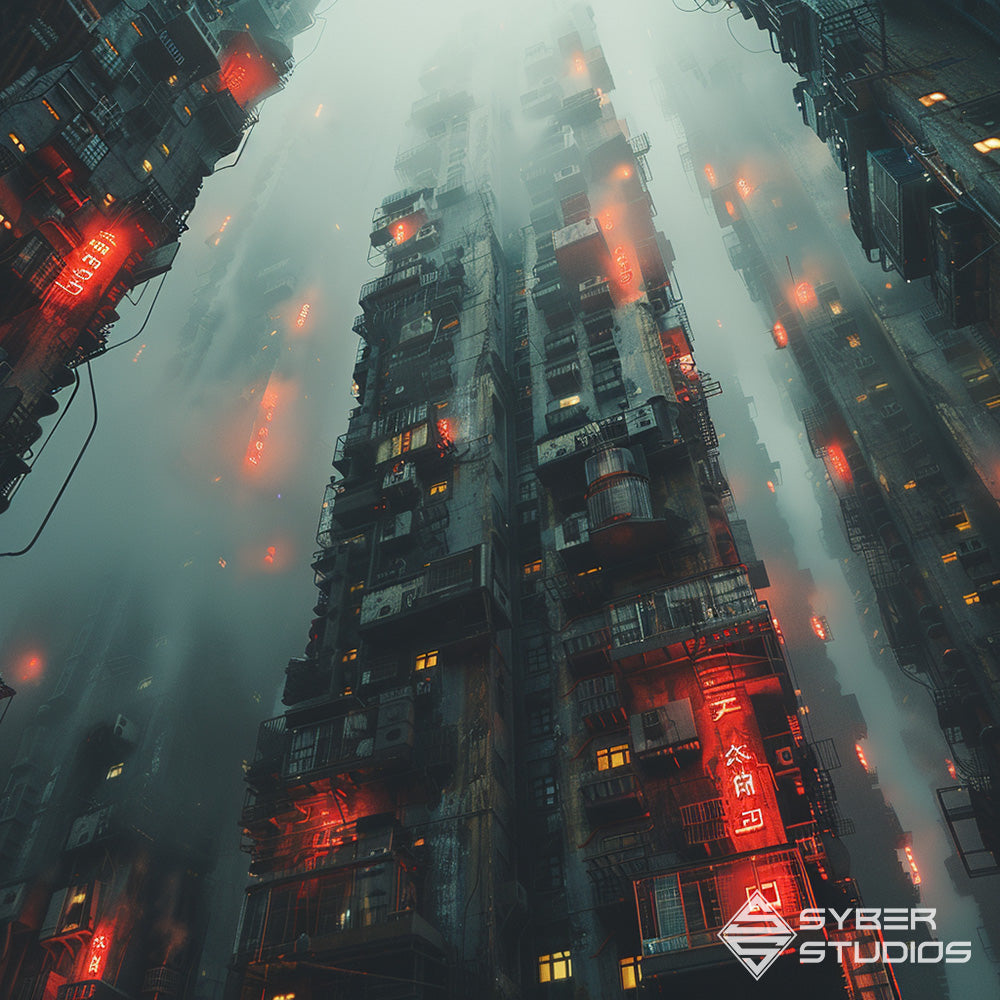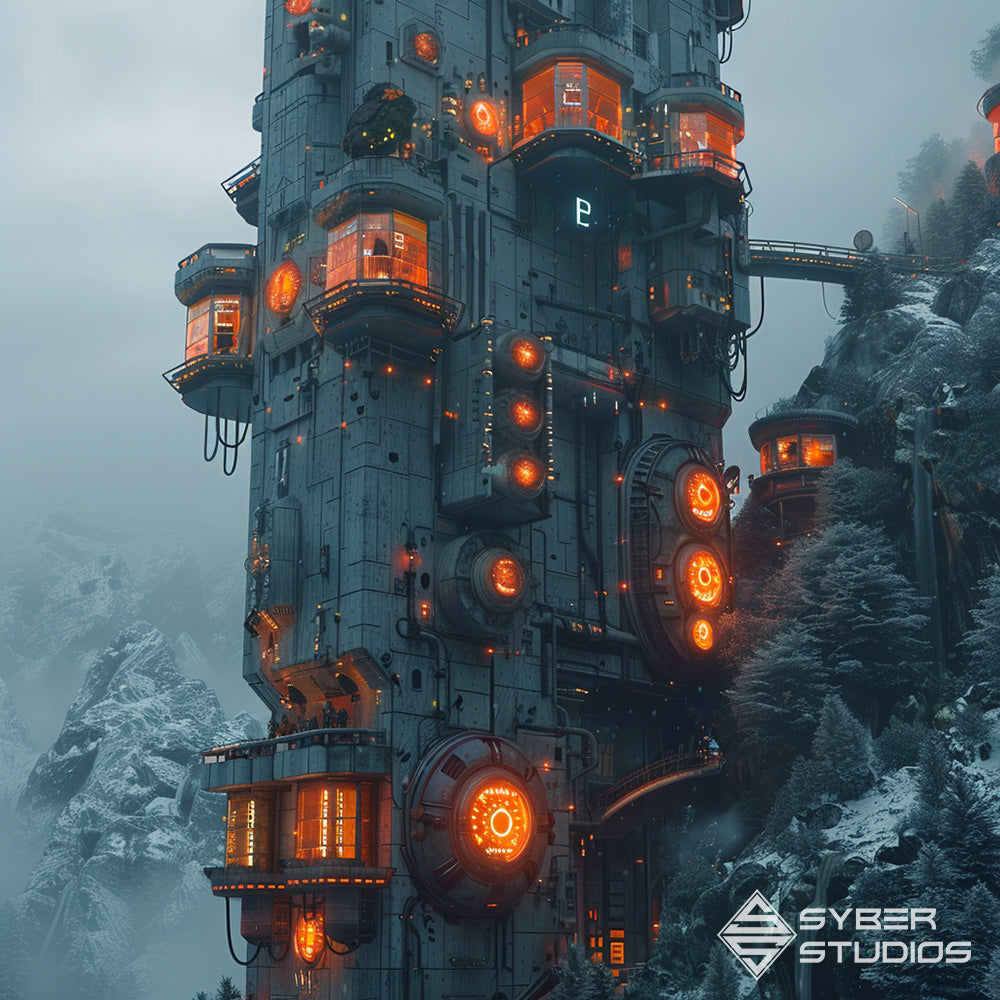In the realm of cyberpunk, the future has arrived, not with a whisper, but with a roar of neon and the hum of advanced technology, all set against the gritty backdrop of dystopian cities. This is a world where the cutting edge meets the crumbling corner, where the glow of progress shines on faces lined with stories of survival. Cyberpunk architecture, a term that evokes images of towering skyscrapers, neon signs, and a perpetual night, serves as the perfect embodiment of this dual-natured future.
The Birth of a Genre
Cyberpunk, a genre that seamlessly blends the advanced technological landscape of the future with elements of a dystopian society, has its roots in the speculative fiction of the late 20th century. Authors like William Gibson, whose seminal work "Neuromancer" painted vivid pictures of networked, digital landscapes, laid the groundwork for what would become a significant cultural and architectural movement. This genre posited a world where society is as fragmented as the brightly lit billboards, casting long shadows over the urban decay below.
Architecture in a Dystopian Hue
Cyberpunk architecture takes cues from these narrative foundations, imagining cities where the architecture is as much about the vertical sprawl as it is about the societal divides it represents. Buildings reach into the clouds, adorned with digital screens and neon lights, while the street level thrives with a chaotic mix of life, technology, and survival. It's in these spaces that the essence of cyberpunk—a mix of despair and dazzling future—comes to life.
Real-World Inspirations
While cyberpunk might seem like a far-off fantasy, elements of its architectural style have found their way into our world. Cities like Tokyo, with its Shibuya and Shinjuku districts, offer a glimpse into what feels like a cyberpunk reality, where neon signs bathe the streets in vibrant colors and digital screens tower above. In contrast, the corporate megatowers and slums of cities like São Paulo reflect the genre's themes of economic disparity and vertical urban growth.
From Fiction to Functionality
What's truly fascinating about cyberpunk architecture is not just its aesthetic appeal but how it influences modern urban design. Architects and city planners draw inspiration from these imagined worlds, integrating advanced technology and sustainable practices to address the challenges of real-world urban sprawl. Features like vertical gardens, smart buildings, cyberpunk interiors and integrated digital interfaces suggest a future where cyberpunk's visual motifs merge with functional, livable urban spaces.
The Dystopian City as a Cautionary Tale
At its core, the dystopian city of cyberpunk serves as a pre-cautionary tale, a mirror reflecting our potential future should current trends in technology, society, and environment continue unchecked.It asks us to consider the cost of unchecked technological advancement and the deepening chasm between the haves and have-nots.
Conclusion: A Glimpse into Tomorrow
Cyberpunk architecture, with its dazzling dystopian cities, offers more than just a visual feast; it creates a framework for examining our relationship with technology, urban living, and each other. As we stand on the brink of our own future, looking out over the cityscapes that inspire and intimidate, one can't help but wonder: in our rush towards the future, what version of these dystopian dreams are we bringing to life? Cyberpunk reminds us that in the heart of darkness, there's always a neon light—a beacon of hope, creativity, and human resilience.
In exploring the neon-drenched streets and towering edifices of cyberpunk's dystopian cities, we uncover not just a genre of speculative fiction, but a profound commentary on the human condition. As we forge ahead, let these visions of the future inspire us to build a world where technology serves humanity, and where the light of progress illuminates the way for all.
This exploration of cyberpunk architecture and its embodiment in the dystopian city offers a peek into the possible futures our urban environments might hold. It's a journey through the imagination that reflects back on our reality, urging us to think critically about the path we're on. Whether you're an aficionado of the genre or simply curious about the future of urban design, there's no denying the powerful allure of these cyberpunk visions.
